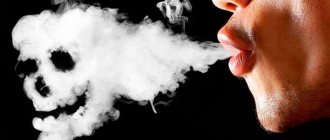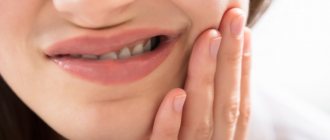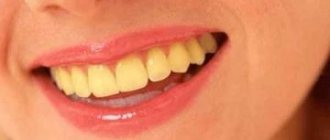Quite a lot of patients who smoke are interested in the question of whether it is possible to start smoking after tooth extraction . Most often, wisdom tooth removal requires creating the right conditions for rapid wound healing. Proper oral care during this period will prevent the exacerbation of pain and the development of various complications. Many patients experience real stress during the procedure and consider a cigarette to help calm their nerves. You can smoke after tooth extraction, however, it is important to follow several rules that will minimize the likelihood of developing an exacerbation.
The effect of tobacco smoke on implants
To understand how smoking and dental implantation are combined, you need to find out what the negative effects of nicotine and tobacco tar on the oral cavity are.
Firstly, every time smokers inhale tobacco smoke through the mouth, periodontal tissues find themselves “in the line of fire”, since they are exposed to all the harmful substances at once. The smoking process itself burns the mucous membrane, thereby striking the beneficial microflora and provoking the development of inflammation.
Secondly, nicotine and tobacco tars have not only a local, but also a systemic toxic effect, as a result of which the smoker’s tissues are less well supplied with oxygen and nutrients.
If the implants themselves are made of reliable material and deeply fixed, tobacco smoke will not destroy them. However, it does not allow the body to cope with the implantation of artificial teeth into the bone and recovery after surgery.
Due to problems with regeneration, smokers are limited in their choice of surgery. For example, they cannot do one-step or one-stage dental implantation. In any, even the most virtuosic performance, surgery is stressful for the body. Violation of the integrity of the gums, insertion of foreign objects into the bone - all this requires time and effort to recover. Smoking during implantation interferes with the healing process, it does not even allow maintaining hygiene at the proper level. After all, if hot smoke regularly enters the mouth, tobacco tar forms a plaque, and the mucous membrane is constantly dry, then harmful bacteria multiply in such conditions almost unhindered.
The systemic effect of nicotine on the body also interferes with recovery. Even high-quality orthopedic products have little chance of healing with damaged bone in a short time, given its poor blood supply and weakened immunity. And heavy smokers almost always have these problems.
The installation of classical implants is also excluded due to the osseointegration zone close to the surface. If the patient does not give up the bad habit, then regular burns of the gums and the proliferation of pathogenic bacteria on the mucous membrane will soon lead to peri-implantitis. This is the name for inflammation of the bone at the site of implantation of the artificial root until it softens. Therefore, smoking during implantation often leads to rejection, and the destructive process itself is quite painful.
Another problem is that the patient may require osteoplasty before implantation. This usually happens when the bone of the upper jaw under the maxillary sinus becomes thinner—in this case, a sinus lift is performed. But in other places, it is often necessary to build up bone tissue before inserting a titanium rod into it, and in a smoking patient there is a high probability of rejection of the transplanted bone material.
The essence of the filling procedure
Reference! Filling is a specific method that helps restore the shape and function of a damaged tooth.
First of all, the dentist cleans the cavity of unnecessary substances , and then fills it with filling material .
Currently, technologies make it possible to reduce the likelihood of post-filling complications to zero.
Dentists prefer to use gutta-percha-based .
This is a special biological material that allows you to close any channel, regardless of its width and curvature.
Preparing teeth for filling is carried out in the most usual way. The dentist performs mechanical expansion and frees the cavity from the affected tissue.
This is followed by antiseptic treatment. The doctor uses disposable cellulose-based pins to accurately determine the length of the canal and then dry it.
Possibility of implantation in a smoking patient
Smokers have a chance of successful implantation under the following conditions:
- Choosing the appropriate type of implants. To avoid the development of inflammation in the area of osseointegration, it is necessary that this area is as deep as possible. The deepest fixation in the jaw is provided by basal implants, which are implanted not into the upper part, but into the lower layer of the jawbone. This type of implant is also most suitable for thinning bone tissue.
- Strict smoking cessation for a certain period of time before and after surgery. Moreover, from any type of smoking, including electronic cigarettes.
- Compliance with all doctor's prescriptions. The patient will have to not only carefully monitor oral hygiene, but also follow other recommendations. That is, take prescribed antibiotics in the prescribed course, antihistamines, specific vitamins to support immunity, etc.
What are the types of fillings and fillings?
Many patients are asked: “What fillings do you want to get?” And in order not to get into an awkward position, you need to understand what kind of fillings exist.
Keep in mind! In dentistry, they differ in composition and use:
- Plastic and ceramic. Plastic ones are the most popular because they are considered cheap and quick to install. Ceramic ones are harder and more reliable.
- Amalgam fillings. They contain silver, copper, zinc, mercury or tin. They are considered ductile, have high strength and can last for several years.
- Temporary and permanent. Temporary ones are used for long-term treatment, and permanent ones are used for instant treatment at a time.
Note! Modern medicine provides several types of materials for tooth filling.
Their main goal is to restore all processes. The material must be selected for the appropriate load:
- Filling of front teeth. Most often, teeth are destroyed due to caries in the front row. This procedure has its own indicators. To avoid future problems with chewing food, a specialist installs light-curing material.
- Filling using paste. Doctors quite often use pastes in their work. They are needed to seal the void after the inflamed pulp has been removed.
- Innovative filling. Such methods include canal sterilization, the use of hot or cold gutta-percha, mummification and retrograde filling.
Is it possible to smoke before implantation?
Before dental implantation, you should not smoke for a month to give the mucous membrane the opportunity to recover from burns and dryness and improve blood circulation. At this time, it is recommended to lead a healthy lifestyle, that is, it is advisable not to drink alcohol, eat right and take vitamins to strengthen the immune system. In addition, you need to carefully monitor your oral hygiene.
A month is the minimum period of abstinence from smoking before surgery. Ideally, the longer the better.
Teeth whitening methods
There are several whitening methods:
- Mechanical cleaning Air-flow. It has weak whitening compared to other methods, but it also has the safest effect. Includes high pressure water, air and sodium bicarbonate abrasive. The narrow tip of the sandblaster produces a thin stream with strong pressure, through which the dentist cleans plaque from each tooth. If tartar is present, the patient is first removed with ultrasound. As a result, the enamel is cleared of impurities and becomes lighter, but the yellow pigment does not discolor. However, increased tooth sensitivity after the procedure goes away faster than with intensive whitening methods.
- Photobleaching. Application of a teeth whitening gel to the enamel, which does not begin to act until high-intensity light rays are directed at it. Under the influence of light, the composition with hydrogen peroxide and carbamide oxidizes and penetrates deeper into hard tissues, discoloring them. It is preferable to use an LED or halogen lamp instead of an ultraviolet lamp, as they emit cold light and heat should be avoided during oxidation. A course of procedures can whiten by 10, and in some cases, by 12 tones.
- Laser. Just like with photobleaching, a gel based on hydrogen peroxide is applied to the enamel, and then its properties are activated. Only in this case, the catalyst for the chemical reaction is not intense light, but a laser beam, which the doctor directs one at a time to each tooth being whitened.
- Chemical. It differs in that a stream of light or laser is not required to oxidize the bleaching composition. The reaction occurs gradually, without additional exposure. The gel is applied to the teeth and left for a while, and then removed. In this way, teeth can become whiter by 5–7 shades.
- Endobleaching. It is used in cases where the crown of the tooth darkens from the inside. Most often this happens after injury (due to hemorrhage into the pulp), due to death or removal of the nerve, due to a reaction to the filling material. Then a whitening compound is injected into the crown through a drilled hole, and the whole thing is closed with a filling. This operation is not performed on “living” teeth, only on pulpless ones.
Modern dentistry can allow a patient to get the smile of their dreams in just an hour. But you should not think that eliminating yellowness acquired as a result of smoking, drinking strong coffee and chocolate in large quantities means that after teeth whitening you can do the same thing with the same success. After treatment with bleaching compounds, enamel becomes more sensitive and vulnerable, and it requires time to recover.
In fact, the surface of the tooth is not perfectly smooth: its microrelief includes, in addition to smooth areas, hills and depressions. After bleaching, the enamel is deprived of its protein film (pellicles) and its upper uneven layer is exposed, to which new contaminants quickly “attach.” And whitening sessions are not recommended to be done frequently, as this causes the enamel to demineralize, becoming vulnerable to the formation of tartar and even cracks.
Whitening affects not only the surface of the tooth, but also the next layer of its structure. When cleaning the enamel alone, you won’t get a Hollywood smile, because yellowish dentin shines through its translucent layer. When the whitening gel oxidizes, the permeability of the enamel increases, and the composition penetrates deeper, discoloring the dentin and affecting the nerve endings located in it. Because of this, teeth react especially sharply to cold, hot liquid, acid and other irritants.
Therefore, one of the conditions for successful rehabilitation is diet. The white diet, also known as colorless, involves excluding from the diet foods and drinks that contain acid and coloring matter.
Is it possible to smoke after dental implantation? When is it possible?
The minimum period for quitting smoking after dental implantation is 1.5–2 months. It is necessary to endure it so that the wounds in the mouth heal and the gums tighten, tightly grasping the implants.
The most correct decision would be to quit smoking completely, because due to this habit the patient’s blood vessels, bones and mucous membranes will soon be “under attack” again. However, the most important thing is to maintain at least a two-month rehabilitation period after surgery to reduce the risk of peri-implantitis.
This rule also applies to users of electronic cigarettes, the vapor from which also contains nicotine and burns periodontal tissue when inhaled.
Useful video
From this video you will learn how the process of filling teeth occurs:
If you are planning to visit the dentist to have your tooth treated, you will have to forget about smoking for about a day. Each person’s body is individual , so the time for the material to harden may take longer.
It is also important to decide on the filling you want to install. After visiting the doctor , your teeth need rest. You will have to refrain from smoking and eating for a couple of hours.
Also, do not ignore the recommendations of a specialist so that the restored teeth can last for decades.
Treatment and prevention
Content:
After tooth extraction, a smoker has a question: how soon can you start smoking? Removing a tooth is not the most difficult operation, but in its place an open wound appears. If a wisdom tooth is removed, the wound can become large. For a quick healing process and prevention of complications, it is necessary to follow all the dentist’s recommendations. So is it possible to smoke after tooth extraction?
Is it possible to smoke after implants have been implanted?
“You can, just be careful,” but it’s better not to smoke. To the facts already listed about the harmful effects of nicotine and tobacco tar on the immune system, blood circulation and mucous membrane, one more argument can be added - smoking after implantation accelerates the loss of bone tissue around the implants.
To be fair, it is worth noting that non-smokers’ bone loss also decreases, but two times slower than that of nicotine addicts. If the former lose a maximum of 0.1 mm per year, the latter lose 0.2 mm. These numbers may seem insignificant, but in fact the difference is significant. In any case, doctors reduce the guarantee for the operation of implants for smokers by 5–10 years.
Therapeutic measures after removal
After removal, the doctor places a tampon in the wound, which is pre-moistened with a hemostatic antiseptic. After 20 minutes, the tampon should be spat out, as the material becomes saturated with blood and becomes a breeding ground for infection.
A blood clot forms in the wound. It will cover it and promote its healing. Do not touch the clot with your tongue, try to pull it out by rinsing or in any other way. This clot should subsequently affect the formation of new bone tissue. The doctor may apply a healing agent to the wound, and after removing a wisdom tooth with overgrown or crooked roots, prescribe antibiotics.
How to calculate the time of the visit?
Preventative examination and consultation usually take no more than 20-30 minutes. If you are seeking comprehensive teeth cleaning, tartar removal, or caries treatment, the appointment time will be 1 hour. If complex treatment is needed, the dose can be extended to 2 hours. Longer procedures (for example, dental prosthetics) are agreed upon by the doctor and the patient in advance.
If you are visiting the clinic for the first time and your card is not there, you should come 15-20 minutes before your appointment. During this time, the administrator will issue a card and enter all your data into it. You need to have your passport with you.
The treatment of many diseases requires several repeated visits to the dentist, and the intervals between them are determined by the doctor (they may depend on the effect of the medications used, healing time, etc.). If you are planning serious treatment, it is better to choose a period when you can freely manage your time and visit the doctor frequently.
Implantation recommendations for smokers
Not everyone is able to give up a bad habit and quit smoking. In any case, the doctor recommends eliminating tobacco consumption two weeks before installation of the implant and at least in the first month during the engraftment stage. If the patient is a heavy smoker, this fact must be taken into account and treatment adjusted. There are several recommendations that can minimize the harm of cigarettes and make treatment more predictable.
- It is recommended to install top systems with an advanced hydrophilic coating, which promotes the formation of bone tissue around the implant and accelerates osseointegration.
- Smokers are not recommended to carry out a one-stage implantation protocol, since in this case there is a high risk of implant rejection and the development of inflammation.
- Basal implantation. Basal implants are installed in deep layers of bone that are not subject to atrophy, which is a plus for a smoker. However, this method has its own nuances that must be taken into account.
- Smokers need more careful hygiene using an irrigator, and it is also recommended to make preventive visits to the doctor more often.











